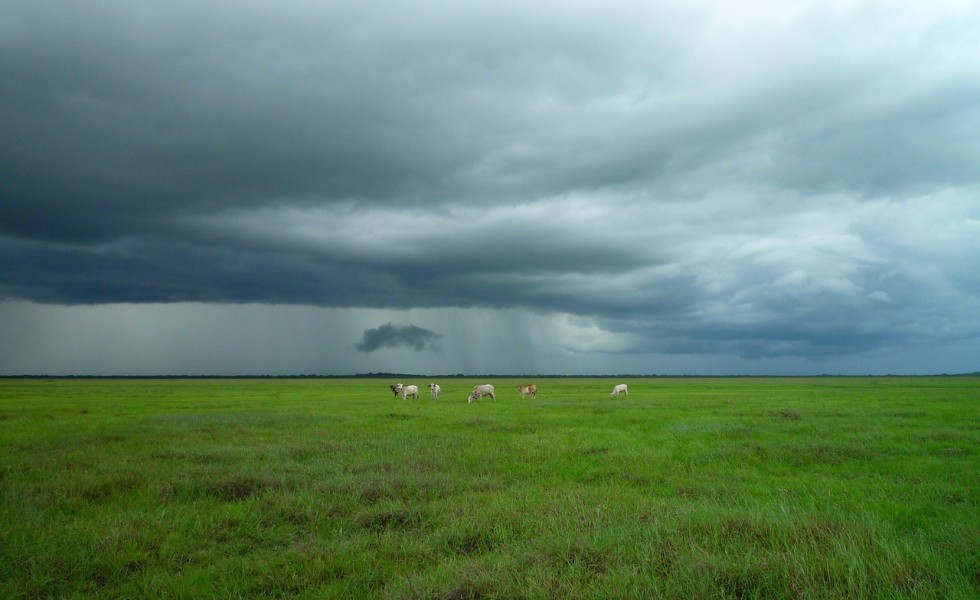If You Want to See the Future, You Need to Look Ahead
Posted on March 22, 2019

To most farmers and ranchers, “sustainable” is a word that, like exercise or vacation, has a dictionary definition and a personal definition. The difference between the two, however, often is the difference between the county fair and the World’s Fair.
These folks aren’t alone. Almost everyone and everything from commodity groups to coal companies make some claim that their business incorporates “sustainable” practices or production.
Rarely, if ever, is anyone asked to prove it. More to the point, even if someone did ask, how would they (or you or I) know if their answer actually supports their claim?
Well, surprise, there is a legal definition for sustainability. According to the National Sustainable Agriculture Coalition, under “U.S. Code Title 7, Section 3103 means [sustainability is] an integrated system of plant and animal production practices that will over time:
–“Satisfy human food and fiber needs;
–“Enhance environmental quality and the natural resource base upon which the agricultural economy depends;
–“Make the most efficient use of nonrenewable resources and on-farm resources and integrate, where appropriate, natural biological cycles and controls;
–“Sustain the economic viability of farm operations and
–“Enhance the quality of life for farmers and society as a whole.”
Given that thoroughly squeaky-green definition, it’s easy to see why almost everyone wants to present themselves as sustainable. But that squeaky greenness is also why very few farms and ranches (and no coal companies) are truly sustainable despite claims that they are.
Recently, National Geographic used plainer, almost fighting-words language to shorten that legal description. “The concept of sustainable agriculture embraces a wide range of techniques, including organic, free-range, holistic, and biodynamic” farming, noted the magazine, that “mimic natural ecological processes.”
At “its core,” however, the magazine went on, sustainable agriculture “is a rejection of the industrial approach to food production developed during the 20th century.”
And, I’m guessing, most of the farmers and ranchers born “during the 20th century” just turned the page.
Everyone still reading, as well as those who did turn the page, knows that rejection is a staple in American agriculture. We like to call it change, but most of that change arrived on the heels of rejection. For example, in the last 30 years, U.S. farm policy rejected set-asides, target prices, federal grain storage programs, and federal milk market orders as it slowly evolved into a subsidized, insurance-centered program.
None of that history means that either Congress, farmers, or American eaters are prepared to reject “industrial food production” whole-loaf and switch to sustainable food production, especially when few agree on the exact meaning of “sustainable.”
But all—especially farmers—are keenly aware that the non-farming public has gained considerable market and political power over what they say is “sustainable” food and what they see as “unsustainable” food production practices that threaten shared resources like land, water, and air.
And they will be heard.
For proof, don’t just ask them; look to the marketplace, also. According to a March 2018 report on just-food.com, the website of a United Kingdom-based food market research firm, U.S. “sales of food and beverages bearing labels relating to environmental sustainability stood at $198.6 billion in 2017…”
That was after “the market has grown by around 5% between 2016 and 2017” and before it “will grow another 5% in 2018.”
By comparison, U.S. ag exports, the looked-to rocket fuel for farm and ranch profits by American producers and politicians alike, were (all fiscal years) $140.5 billion in 2017, $143.4 billion in 2018, and will sag to an estimated $141.5 billion in 2019.
No one needs to chart those trends to see that one market is quickly heading north while the other is flat-to-stuttering south. Does that divergence mean that the trend toward sustainable food means sustainable agriculture is, well, becoming sustainable?
Yes. Wait, probably. Well, maybe.
An easier answer is to state the more obvious: Most profit-pinched American farmers and ranchers just spent the winter searching for ways to squeeze more bushels and pounds out of an increasingly unsustainable system.
As such, it’s hard to see a lasting future for a production system still focused on the past.
© 2019 ag comm
Share This